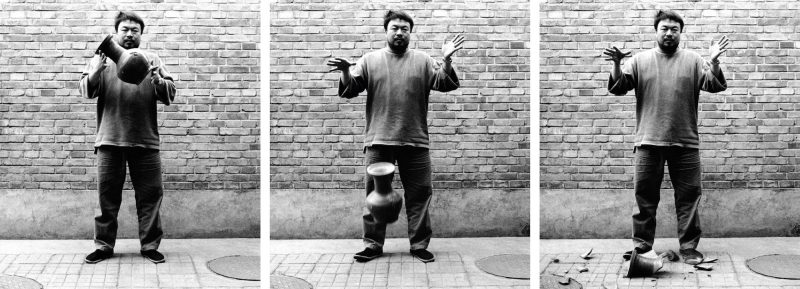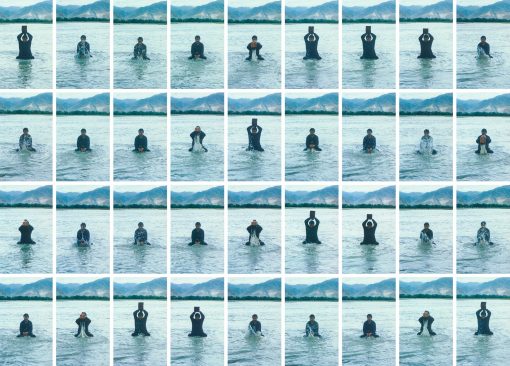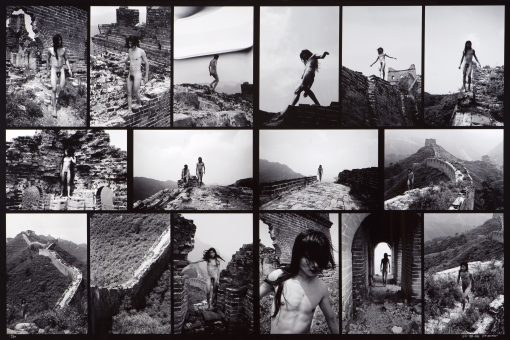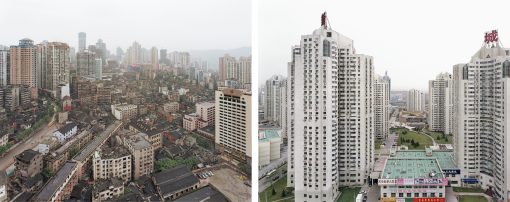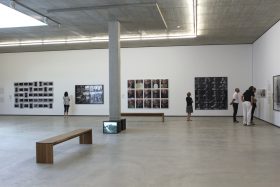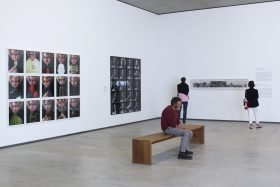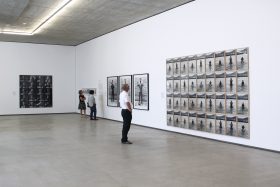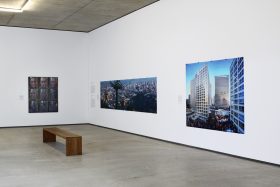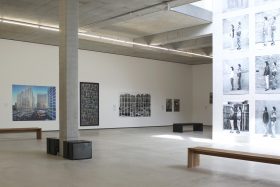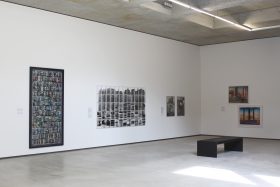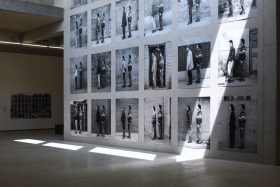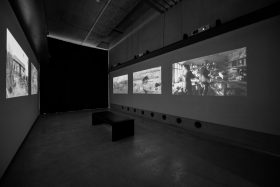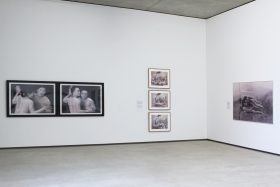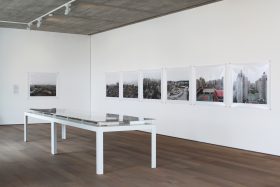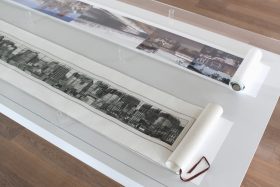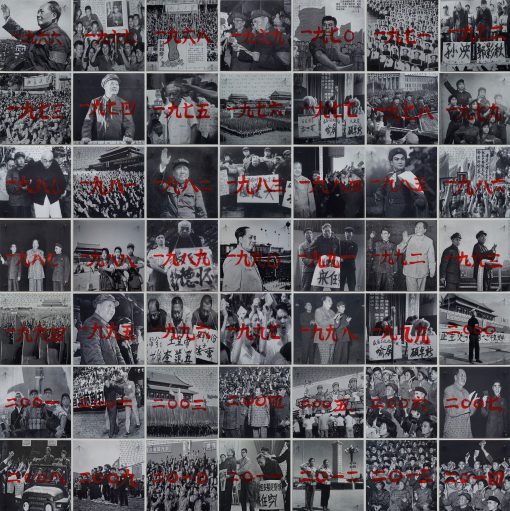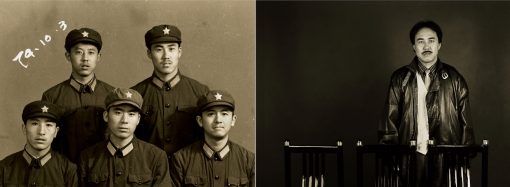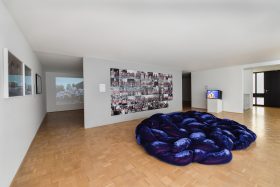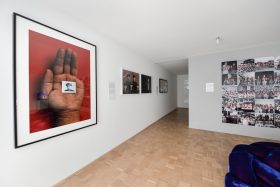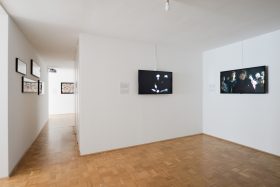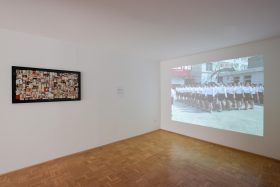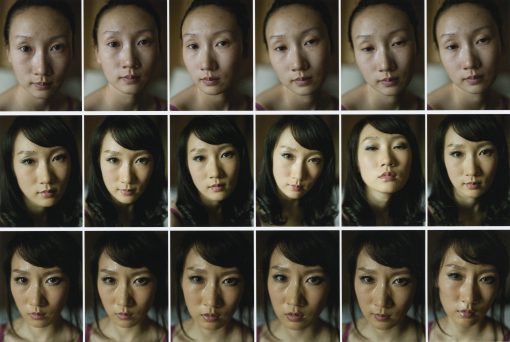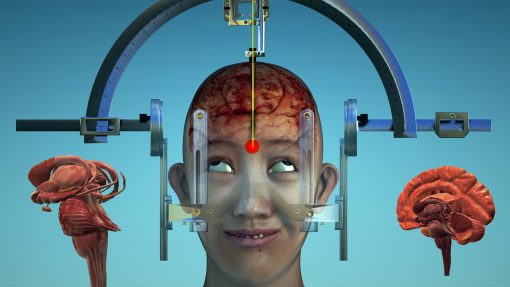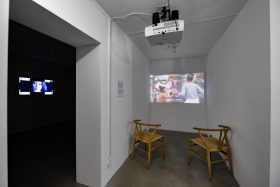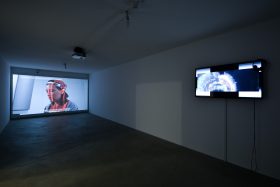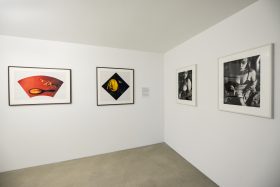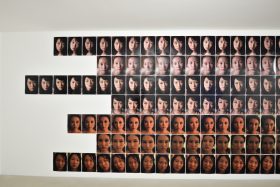Life and Dreams
Contemporary Chinese Photography and Media Art
5/13/2018 — 11/18/2018
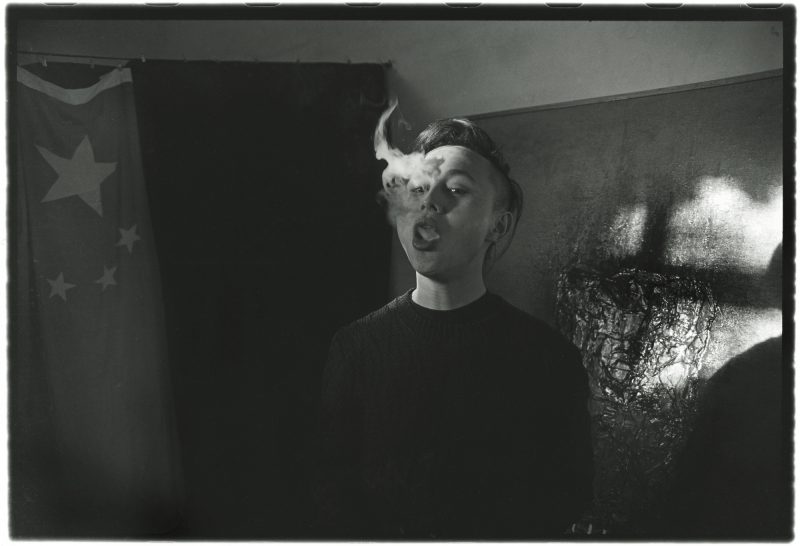
5/13/2018 — 11/18/2018
The Walther Collection presents Life and Dreams: Contemporary Chinese Photography and Media Art, the first extensive exhibition of works by Chinese artists represented in The Walther Collection. Featuring forty-three artists, Life and Dreams showcases a wide range of groundbreaking photography and media art produced by internationally recognized figures such as Yang Fudong, Zhang Peili, Ai Weiwei, Song Dong, Cao Fei, and Zhang Huan during an era of momentous social and economic change. It also incorporates new acquisitions and selected loans of significant media art by innovative younger artists such as Sun Xun, Lu Yang, and Cheng Ran to provide an up-to-the-minute account of the main directions and key achievements in contemporary Chinese photography and media art during the past three decades.
Curated by Christopher Phillips, Life and Dreams opened at The Walther Collection in Neu-Ulm, Germany on May 13, 2018, and is accompanied by a catalog edited by Christopher Phillips and Wu Hung, co-published by Steidl / The Walther Collection.
Showing visually inventive and emotionally compelling artworks, the exhibition demonstrates the remarkable speed with which photography and media art have occupied important positions within the field of experimental Chinese art since the early 1990s. Throughout Life and Dreams, photographic works register artists' responses to the sweeping social and economic changes that have fundamentally altered the face of China's cities and transformed the fabric of everyday life. Featured selections of media art often evoke an ambiguous world of technological fantasy, suggesting where these changes may be leading the country and its inhabitants.
Life and Dreams does not set out to provide a full account of the many facets of Chinese photography and media art that have developed over the last three decades. Instead, it offers a selection of works that represent diverse, challenging, and complex individual perspectives. Although its core consists of the extraordinary photographic works made during the 1990s, the exhibition goes beyond offering a fixed view of that crucial chapter in the development of photography and media art in China. The simple passage of time has a remarkable power to throw older works into new relief, bringing out qualities that would have been imperceptible at earlier moments. In addition, placing earlier photographic works in the company of recent examples of Chinese media art allows for surprising echoes, affinities, and continuities to be revealed.
To highlight the underlying currents in contemporary Chinese artistic production, Life and Dreams contains five modular themes, which unfold throughout the White Cube, the Black House, and the Green House: "The Body as Language," "Revisiting and Recasting the Classics," "Urban Utopias and Dystopias," "China's Political Past and Present," and "New Personal and Collective Identities." Together, these topics constitute an informal network of ideas and associations that link the works within the exhibition together.
Taking the Beijing East Village as its impetus, the White Cube demonstrates how Chinese artists and photographers such as Zhang Huan and Ma Liuming, intensely and collectively explored the multiple expressive possibilities of photography.
One of the most radical innovations of photography in the early 1990s was an aggressive emphasis on the nude human body, a motif rarely found in traditional Chinese art. "The Body as Language" articulates the ways that artists such as Zhang Huan and Ma Liuming deployed the camera to document performances that tested the limits of the body, explored the changing sense of self in modern China, and confronted aspects of the country's history and culture.
Some of the works exhibited in the White Cube refer to historic artworks and artifacts from China's 2000-year cultural heritage. Through expansive and sprawling compositions, the artists—such as Ai Weiwei, Wang Qingsong, and Hong Lei—in "Revisiting and Recasting the Classics" update and synthesize classical, historical imagery to comment on contemporary issues.
Surveying, examining, and intervening upon the architectural and built environment, the artists in "Urban Utopias and Dystopias"—also shown in the White Cube—present a variety of ways to consider the tensions embedded within the physical structures of urban China. Works by Zhang Dali, Luo Yongjin, Xiang Liqing, and Sze Tsung Nicolás Leong reflect the demolition of long-established urban neighborhoods in Beijing and Shanghai, in order to make way for high-rise developments.
While many aspects of daily life have undergone tremendous changes since the country officially launched its reform and opening policy in 1978, the Chinese Communist Party has been able to maintain its monopoly of power through authoritarian-dictatorial style of government. Producing artworks that offer explicit political commentary continues to be dangerous in China, but such works created by artists as Mo Yi, Bo Wang, or Sheng Qi are still being made (if not shown) there as the Black House documents.
Mo Yi's 5.16 Notice (2014), a grid of 49 photographs made of Mao Zedong during the traumatic years of the Cultural Revolution, tests the boundaries of how far an artist can go in addressing political subjects. The work's title refers to the date of a 1966 Communist Party communiqué that set Mao's catastrophic upheaval in motion.
Hai Bo highlights the historical gap between two very different eras in modern Chinese history in They No. 3 (2000) with the form of a diptych juxtaposing a group of men in 1974 and 1999. In the first image, five young men are presented in Red Army uniforms, visually united in political comradeship; in the latter image, only one of the original figures remains, surrounded by empty chairs and wearing a nondescript jacket.
In the early decades of the People's Republic, China's social structure officially consisted of a solid core of workers, peasants, and soldiers. The more fluid and transient social formations that define contemporary China are reflected in the Green House in "New Personal and Collective Identities," with works by Xu Yong, Zheng Guogu, or Lu Yang which document the emergence of various forms of individual and collective identity based on gender or sexual orientation.
Xu Yong's serial photographic work "This Face" (2011) traces the repeated changes in self-presentation carried out by a female sex worker, Zi U, over the course of one day, as she carefully fashions a new persona for each of her clients. Accumulating hundreds of images, the work witnesses the passage of time through Zi U's changing makeup, disposition, and expression. The time-based portrayal of an often socially marginalized figure marks an unique effort within the current generation of Chinese artists to analyze aspects of their society on an individualistic level.
Lu Yang's Delusional Mandala (2015) narrates the hyper-realistic journey of Lu's 3-D counterpart, an asexual avatar going through the processes of enlightenment, brain surgery, and a funeral procession in free-floating cyberspace. Narrated by a voice-over that traces the avatar's multiple stages of metamorphosis, the work draws its intentionally chaotic aesthetic from Tibetan Buddhism, cult films, and Japanese anime references. Switching between cultural and scientific imagery as much as between gender pronouns, the work takes its place in the current global dialogue on the mutability of individual identity.
"Elegantly designed with an updated bibliography, brief and useful biographies, compact and incisive catalogue entries, and republished essays from difficult-to-locate sources . . . Life and Dreams will be very useful for teaching, offering accessible, clearly written, and historically considered essays concentrated within an accessible volume."
--Christine I. Ho, Assistant Professor of East Asian art history at University of Massachusetts, Amherst
